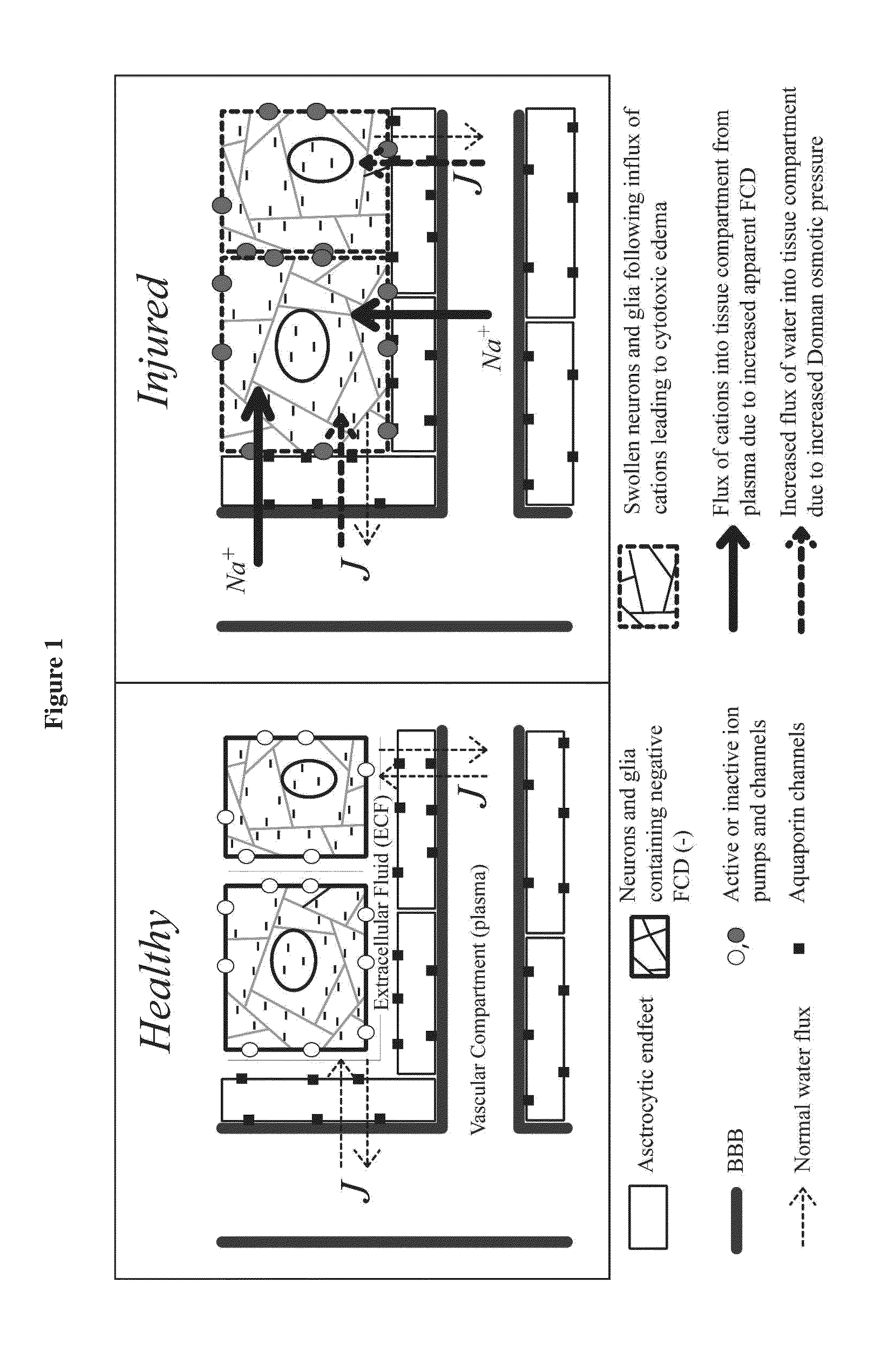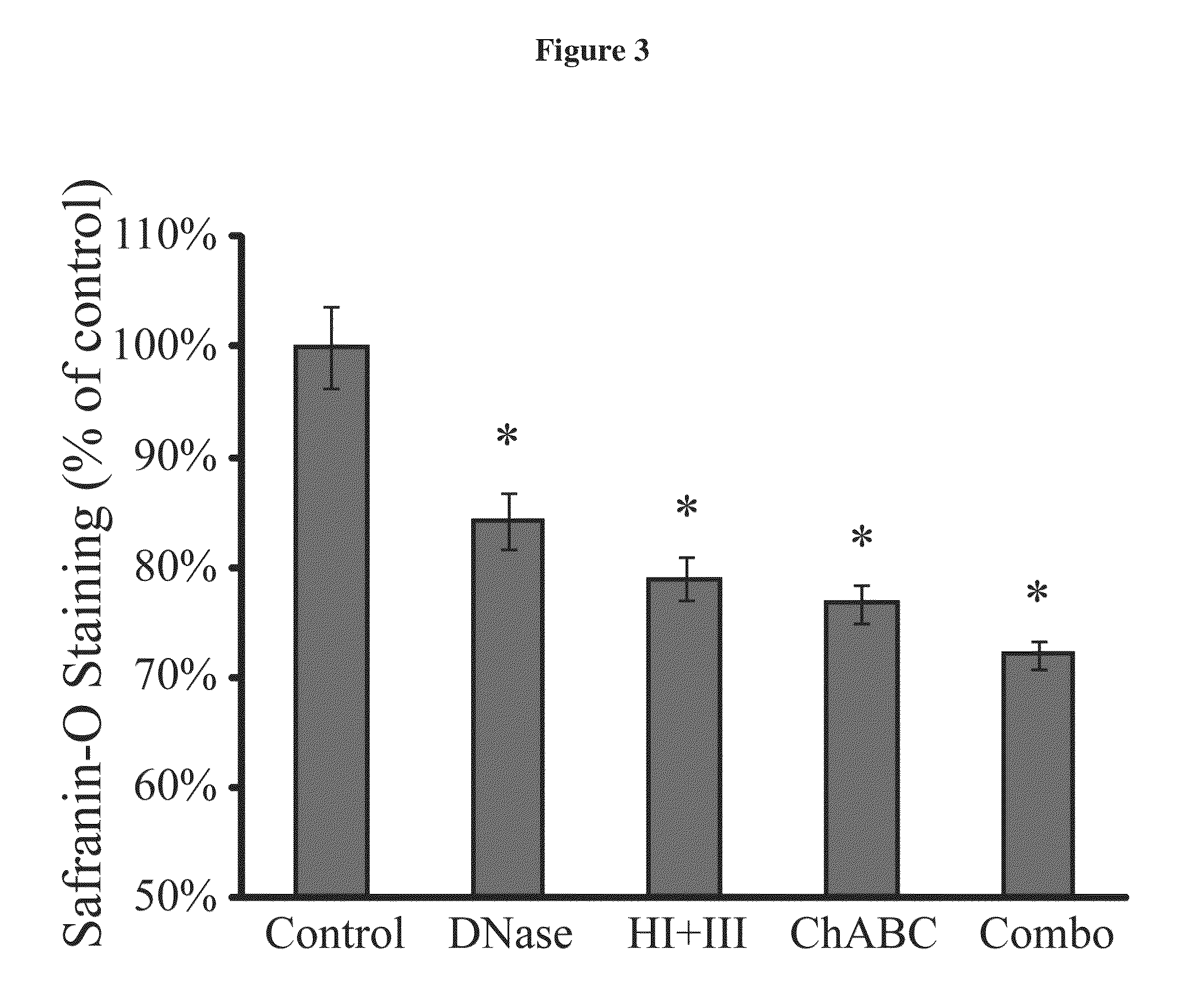Enzyme combinations to reduce brain tissue swelling
a brain tissue and enzyme technology, applied in the field of neurology, can solve the problems of increased donnan osmotic pressure inside cells, fcd exposure to ecf, etc., and achieve the effects of reducing tissue swelling, reducing edema, and reducing tissue swelling
- Summary
- Abstract
- Description
- Claims
- Application Information
AI Technical Summary
Benefits of technology
Problems solved by technology
Method used
Image
Examples
example 1
Materials and Methods
[0041]All animal procedures were approved by the Columbia University Institutional Animal Care andUse Committee (IACUC). For rat studies, brains were rapidly removed from adult Sprague Dawley rats (˜280 g) and placed in a cooled dish. For porcine studies, brains from adult Yorkshire pigs (˜50 kg) were received immediately following sacrifice after use in other studies unrelated to the brain and brought to the laboratory for dissection within 1 h of sacrifice. For both species, strips of cortical tissue were dissected, and 350 μm thick slices were generated on a Mcllwain tissue chopper (Harvard Apparatus). Rectangular sections (approximate dimensions: 3×1.5×0.35 mm) were created by removing white matter and meninges leaving only cortical grey matter. Slices were placed in Gey's salt solution supplemented with 10 mM D-glucose (Sigma) until used.
[0042]Slices were separated into dishes containing Gey's salt solution alone (Control) ...
example 2
Results
[0051]The effect of 24 h enzyme treatment on the GAG fixed charge as measured by the DMMB assay is shown in FIG. 2a. Values are expressed as percentage of dry weight of the tissue to normalize for differences in tissue water content based on amount of swelling (Elkin et al., 2010b). DNase, HI+III, and ChAB C treatment all significantly reduced GAG content as compared to controls. The combination of enzymes (Combo group) significantly reduced GAG content as compared to each enzyme alone and controls; however the combined effect was not additive. DNA content was significantly reduced by more than half in DNase and Combo groups (FIG. 2b) and was not significantly different than controls in HI+III and ChABC groups.
[0052]The effect of enzyme treatment on FCD was verified by staining thin sections of enzymeterated slices of tissue with the cationic dye Safranin-O. Optical density was used as a measure of dye intensity, and average optical density as a percent of controls for each t...
PUM
| Property | Measurement | Unit |
|---|---|---|
| thick | aaaaa | aaaaa |
| pH | aaaaa | aaaaa |
| angle | aaaaa | aaaaa |
Abstract
Description
Claims
Application Information
 Login to View More
Login to View More - R&D
- Intellectual Property
- Life Sciences
- Materials
- Tech Scout
- Unparalleled Data Quality
- Higher Quality Content
- 60% Fewer Hallucinations
Browse by: Latest US Patents, China's latest patents, Technical Efficacy Thesaurus, Application Domain, Technology Topic, Popular Technical Reports.
© 2025 PatSnap. All rights reserved.Legal|Privacy policy|Modern Slavery Act Transparency Statement|Sitemap|About US| Contact US: help@patsnap.com



